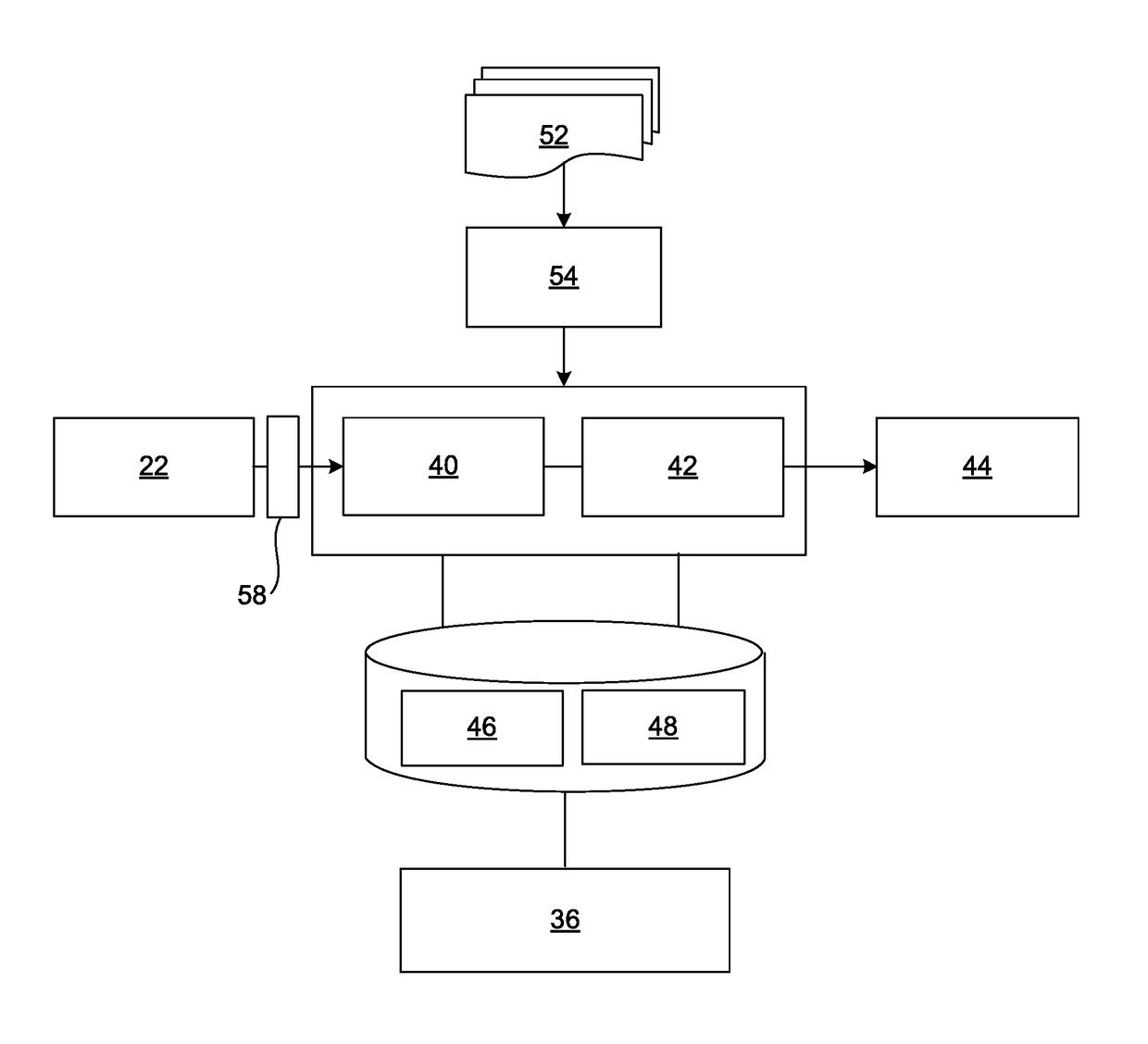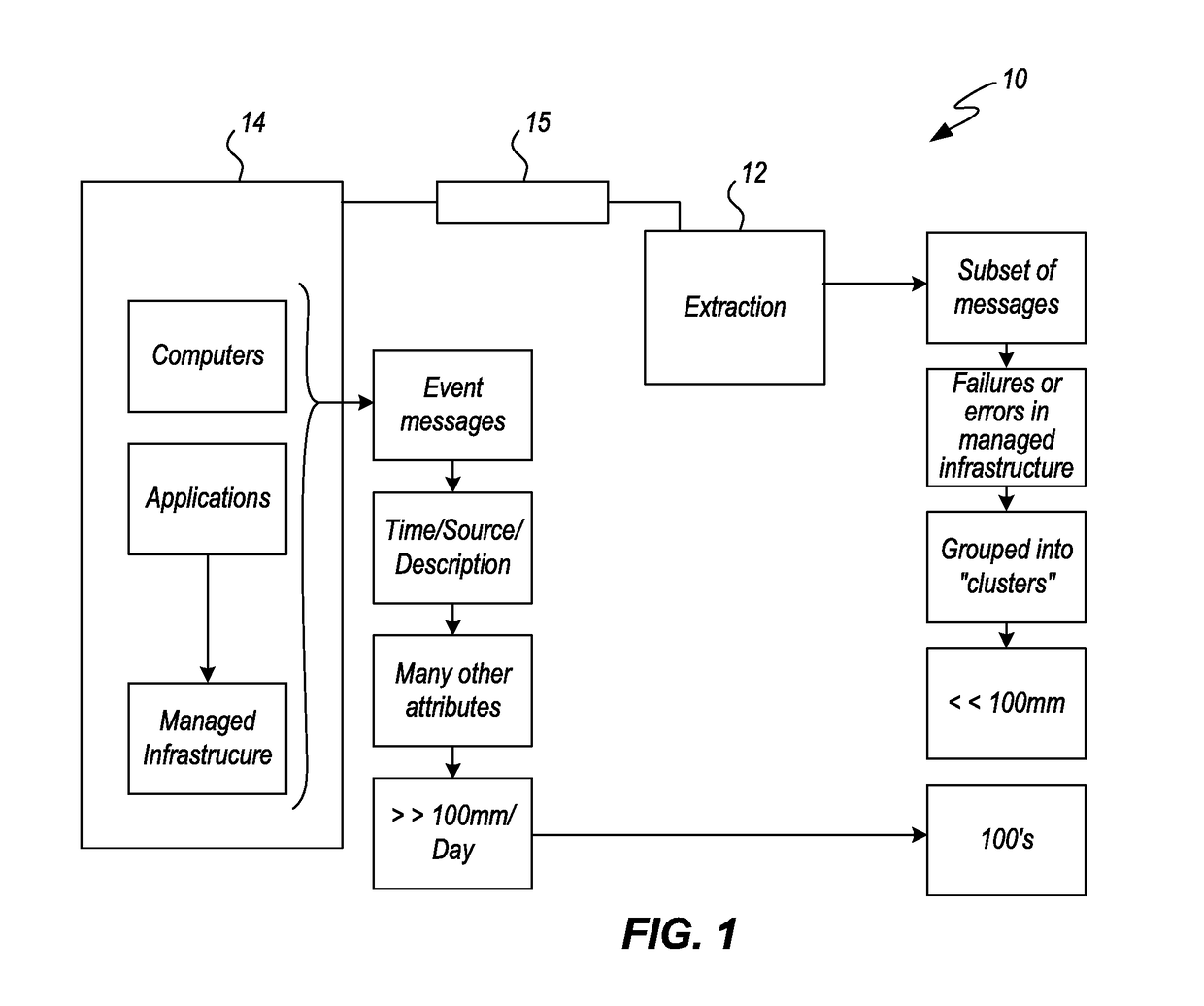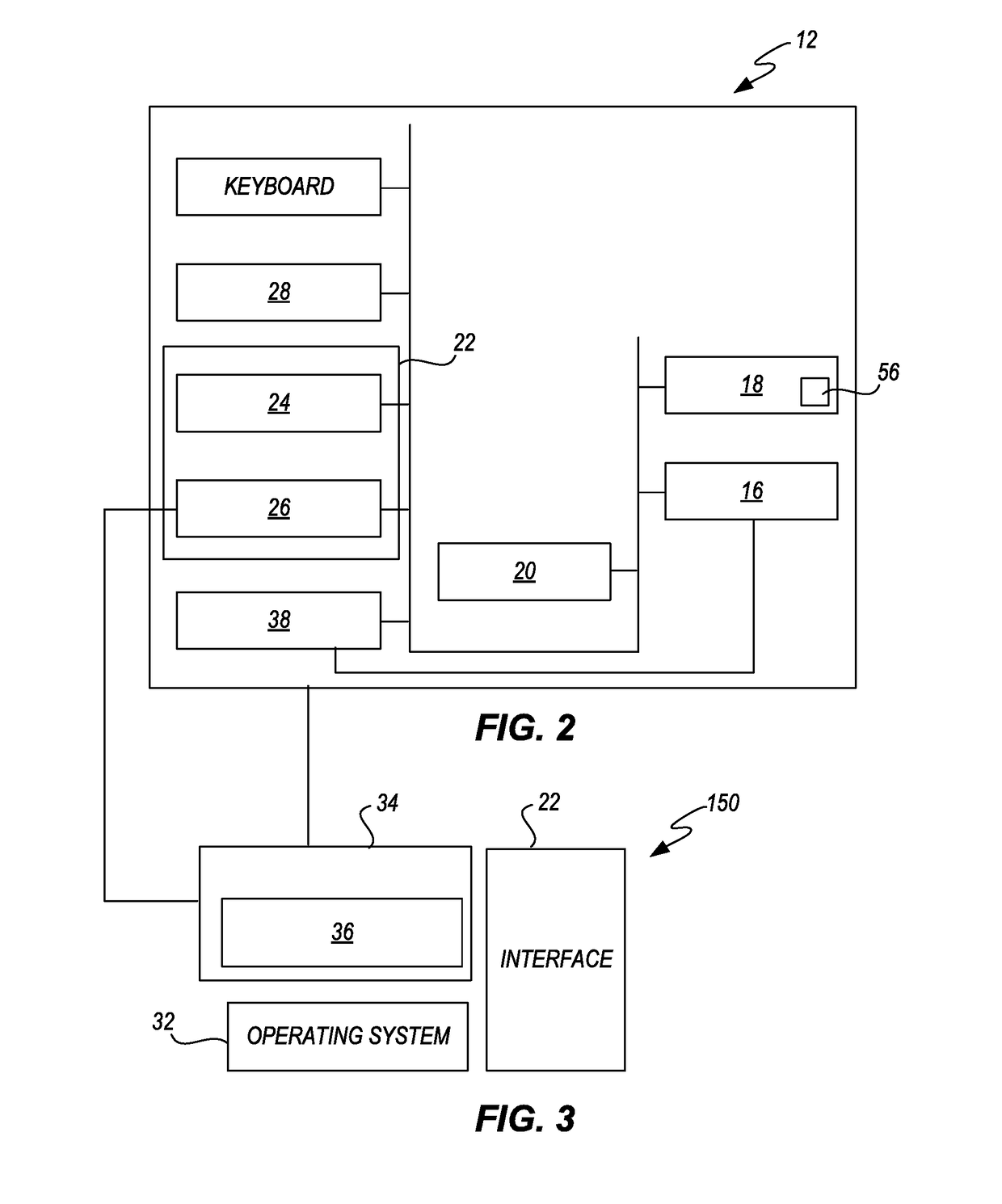System and methods for decomposing events from managed infrastructures that includes a feedback signalizer functor
a technology of infrastructure and decomposing events, applied in the field of event/message processing, can solve the problems of difficult for a person to locate information, impractical to take the time to store messages/events from infrastructure, and difficult for a person to later find and retrieve all messages/events from infrastructur
- Summary
- Abstract
- Description
- Claims
- Application Information
AI Technical Summary
Benefits of technology
Problems solved by technology
Method used
Image
Examples
example 1
[0145]As a non-limiting example, the NMF algorithm can be executed as follows:
[0146]Let Mij be an x p non-negative matrix, (i.e., with M>0, and k>0 an integer). Non-negative Matrix Factorization (NMF) consists in finding an approximation
X=W H(A B), (1)[0147]where W, H are n k and k p non-negative matrices, respectively. In practice, the factorization rank r is often chosen such that r
[0148]The main approach to NMF is to estimate matrices W and H as a local minimum: 1) M=A B[0149]A, B seed randomly tentatively adjusts A, B until the Frobenius distance[0150]∥M−A B∥ is minimized[0151]where[0152]D is a loss function that measures the quality of the approximation. Common loss functions are based on either the Frobenius distance or the Kullback-Leibler divergence.[0153]R is an optional regularization function, defined to enforce desirable properties on matrices W and H, such as smoothness or sparsity.
example 2
[0154]As a non-limiting example, a k-means algorithm is used as follows:
[0155]Given a set of event vectors (x1, x2, . . . , xn), where each observation is a d-dimensional real vector, k-means clustering aims to partition the n observations into k sets (k≤n) S={S1, S2, . . . , Sk} so as to minimize the within-cluster sum of squares (WCSS):
argming∑i=1h∑xj∈B2xj-μi2[0156]where μi is the mean of points in Si.
[0157]In one embodiment, illustrated in FIGS. 13(a) and 13(b) a dashboard 410, associated with a situational room, is included which allows entities and / or people to manipulate messages / events 40 from managed infrastructure, alerts or events 40.
[0158]As a non-limiting example an alert engine 411 receives the events 40 and creates alerts that are mapped into a matrix “M” of events 40, as illustrated in FIG. 14. As a non-limiting example, Mik is the matrix of events 40.
[0159]In one embodiment of the situation room 336, as illustrated in FIG. 1, (a) system 10 is provided for creating, a...
example 3
[0278]irb(main):003:0>p1.simhash[0279]851459198[0280]00110010110000000011110001111110[0281]irb(main):004:0>p2.simhash[0282]847263864[0283]00110010100000000011100001111000[0284]irb(main):002:0>p3.simhash[0285]984968088[0286]00111010101101010110101110011000[0287]In the preceding the hamming distance of the similar items (p1,p2)=4[0288]whereas (p1,p3)=16 and (p2,p3)=12[0289]The simhash of a phrase is calculated as follow . . .[0290]pick a hashsize, let's say 32 bits[0291]let V=[0]*32 # (i.e. 32 zeros)[0292]break the phrase up into features[0293]irb(main):003:0>‘the cat sat on the mat’. shingles[0294]#[0295]hash each feature using a normal 32-bit hash algorithm[0296]“th”.hash=−502157718[0297]“he”.hash=−369049682[0298]for each hash if biti of hash is set then add 1 to V[i][0299]if biti of hash is not set then take 1 from V[i][0300]simhash biti is 1 if V[i]>0 and 0 otherwise simhash is useful because if the simhash bitwise hamming distance of two phrases is low then their jaccard coeffici...
PUM
 Login to View More
Login to View More Abstract
Description
Claims
Application Information
 Login to View More
Login to View More - R&D
- Intellectual Property
- Life Sciences
- Materials
- Tech Scout
- Unparalleled Data Quality
- Higher Quality Content
- 60% Fewer Hallucinations
Browse by: Latest US Patents, China's latest patents, Technical Efficacy Thesaurus, Application Domain, Technology Topic, Popular Technical Reports.
© 2025 PatSnap. All rights reserved.Legal|Privacy policy|Modern Slavery Act Transparency Statement|Sitemap|About US| Contact US: help@patsnap.com



